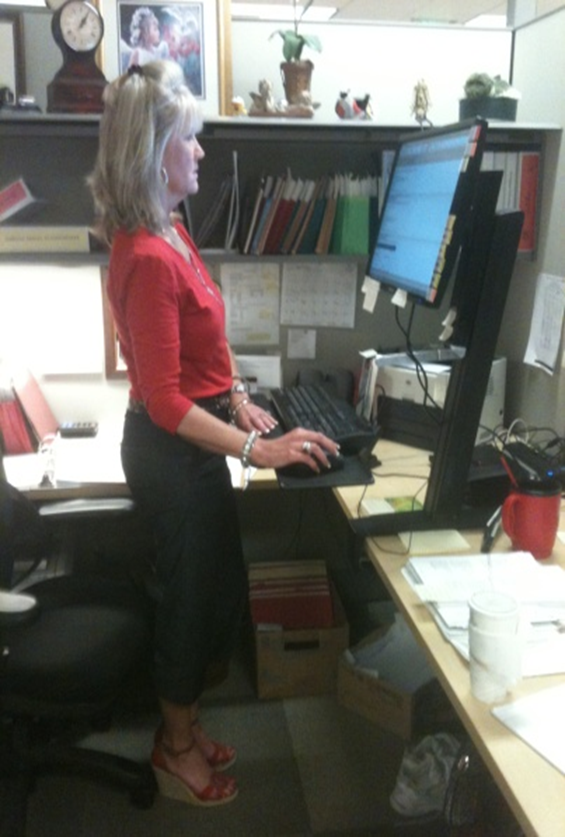Stop sitting around so much. If you value your health, get up and move around.
Sedentary office workers who want to avert the onset of some chronic diseases and possibly premature death should get up on their feet for at least two hours every work day.
That is the part of a new set of recommendations drafted by an international group of experts working on behalf of Public Health England and Active Working CIC, a British community interest company. Their findings and recommendations were just published in the British Journal of Sports Medicine.
Even two hours per day may not be enough standing time, noted the experts. Instead, they’d like to see workers on their feet for up to four hours a day to break-up their daily sitting time.
They suggested that office workers make use of the increasingly popular sit/stand desks, be allowed to perform work that requires some standing and take quick walks throughout the workday.
The team of experts poured through and analyzed previously gathered evidence concerning the risks of prolonged sitting and the advantages of standing from time to time throughout each working day.
Looking at sedentary behavior in the UK, their findings showed that an average office worker sits for about 65-75 percent of their workday. Up to 50 percent of their sitting time involves prolonged periods of sitting.
The experts found that average people in the UK spend about 60 percent of their waking hours being inactive. Those at a higher risk of developing a long-term health condition were sedentary for about 70 percent of their day.
But standing for too long in one position may be as harmful as prolonged sitting, cautioned the researchers. So instead of standing still, move around a bit.
The experts listed some recommendations to avert health risks attributed to prolonged periods of sitting or inactivity:
1) Standing for two hours daily with light walking during working hours, then progressing to four hours for all office workers whose jobs are predominantly desk-based
2) Dividing work regularly between tasks that require sitting and those that can be done while standing, and using adjustable sit-stand desks/work stations
3) Altering posture, along with light walking to alleviate possible musculoskeletal pain and fatigue
4) Encouraging staff to adopt healthier habits by cutting down on drinking and smoking, eating a nutritious diet, and alleviating stress
5) Employers should warn staff about the potential hazards of sitting for too long, whether at work or at home

A woman uses a sit-stand desk in its standing configuration. (National Institute for Occupational Safety and Health)
The expert group’s findings join previous studies citing the dangers of prolonged sitting and inactivity.
An Australian study from March, 2012 published by the Archives of Internal Medicine found adults who sat 11 or more hours per day had a 40 percent increased risk of dying in the next three years, compared to those who stood more and sat for fewer than four hours a day.
In July 2012, an international team of scientists writing in the medical journal The Lancet cited statistics from 2008 that physical inactivity led to the death of nearly 5.3 million people across the world – that’s one in every 10 deaths.
The Mayo Clinic’s Dr. Michael Joyner, recommended, in the July 2012 edition of The Journal of Physiology, that inactivity or a lack of exercise should be treated as if it were a medical condition.
The researchers admitted that a lot of the evidence they reviewed was based on observational studies. They said that “makes it difficult to prove direct cause and effect.”
But while more in-depth studies are needed, the researchers emphasized that the findings justify their guidelines and recommendations, given their review of years of accumulated evidence and public health concerns over rising chronic diseases.






















Stand Up and Move to Help Prevent Health Risks « Science World
Sitting daily for hours and working non-stop can cause serious health issues. These issues include depression, obesity, diabetes, premature mortality, chronic diseases, metabolic disorders, and even diseases such as cancer. Sitting for too long can make your body muscles ache as your body becomes stiff, this also damages the posture of the body harming the spinal cord.